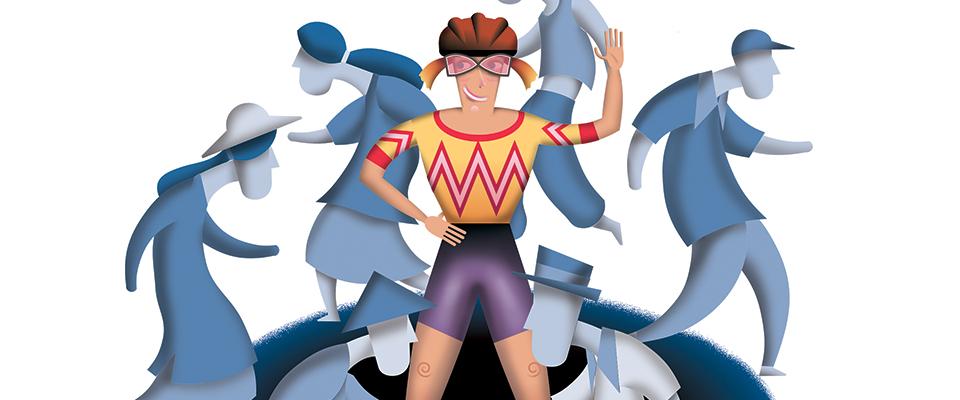Finding My Disorientation
We are cycling through Thailand in the scorching heat. Carlos and I arrived in Bangkok six days ago, where we met our friend Laura to plan our cycle tour through Southeast Asia. This is our second day riding and we’re still learning how to find and buy street food.
A vendor stands next to the road. He seems to be selling sugarcane drinks—something other travelers have said is delicious. The fact that the vendor is smoking small sections of bamboo would indicate otherwise, but I have no idea how the drink is prepared. While Carlos and Laura take shade in a small roadside shack, I go over to see if I can purchase some.
In the two weeks before this trip I foolishly thought I could learn some basic Thai (along with Lao and Vietnamese, since we would be riding there as well). This did not happen. Now with only six days of language skills, which I learned from YouTube, I approach the vendor. “Hello, how much?” I ask in broken Thai. The woman standing next to him says, “50 baht.” Just to be certain I am getting a beverage, I make the universal hand gesture, since I don’t how to say, “So… I have no idea what I am ordering. Is this something you can drink?” She gives me a slightly irritated look, takes my money, and gives me four, foot-long bamboo tubes (I thought I ordered one but clearly I didn’t). I guess my motion—thumb down pointed in mouth—didn’t mean anything to her other than “here is another crazy falang” (the amusing word most foreigners will hear when locals refer to them). It’s hard not to feel embarrassed; I butchered the language and I still have no clue what just transpired between us. But at least I have four drinks, which is what matters, given how thirsty we all are.
I join Carlos and Laura in the shade. We peer inside the bamboo tubes and find grayish-white globs. It isn’t something to drink, but it looks edible.
A truck pulls off the road and stops in front of us. The couple inside stare; they seem to be using their cell phone to take pictures.
Later on we will become accustomed to people staring, sometimes touching, and always laughing hysterically when we respond to their enthusiastic “Hello!” with “Sawadee ka/krap!” (hello in Thai). But in this initial stage of our trip we have yet to grasp how much of a spectacle we are.
We figure out that the bamboo cracks open to expose a tube of sticky rice. The couple in the truck watch us finish our meal. Then the woman in the truck gets out, holds her phone at arm’s length, and starts snapping photos. She even motions for us to squeeze together, which we happily do.
Previously when I traveled, I tried to hide the fact that I was a tourist. Learning the language before I go is one method and also the reason behind my ridiculous attempt to learn three languages in two weeks. But I don’t stand a chance in Southeast Asia. I can’t speak any of the languages. I can’t read them. And I stand out in a purple shirt, teal helmet, and Spandex shorts.
As much as I love Bill Bryson’s travel stories, I cringed when he wrote in Neither Here Nor There: Travels in Europe, “I can’t think of anything that excites a greater sense of childlike wonder than to be in a country where you are ignorant of almost everything…. You can’t read anything, you have only the most rudimentary sense of how things work, you can’t even reliably cross a street without endangering your life.” I traveled a lot as a kid and I wanted to fit in, the same way I wanted to fit in at school. At least that is how I felt before this trip. But after a month in Southeast Asia I find myself embracing being a falang. Maybe Bryson was right. Sometimes I annoy locals, but generally I amuse them and my ignorance makes everything so much more exciting.
When we arrive in France—we flew with our bikes from Hanoi to Paris—people don’t even seem to notice us. No one yells “Hello!” “Where are you going!” or “Where are you from!” And I miss it. Even in Spandex I blend in.
Lauren DiPerna’s travels have also included Orange County and a stint as a California magazine intern.



















